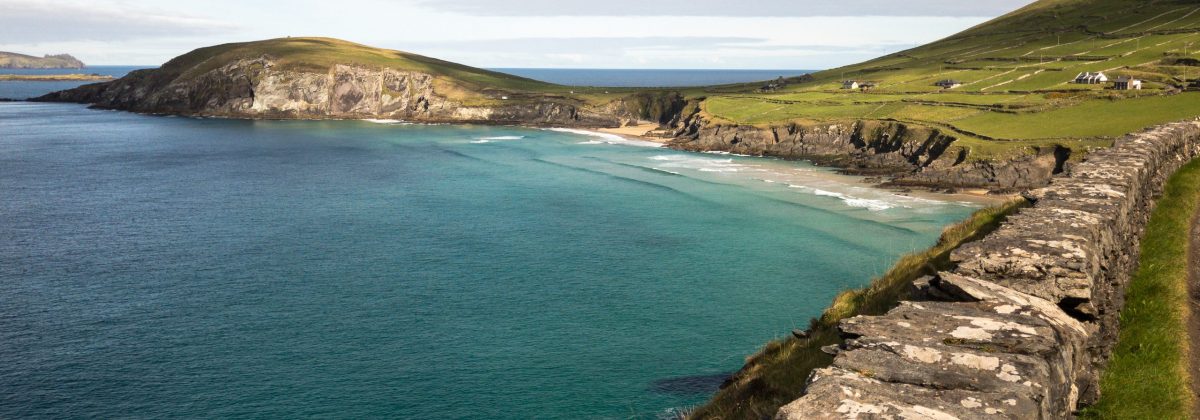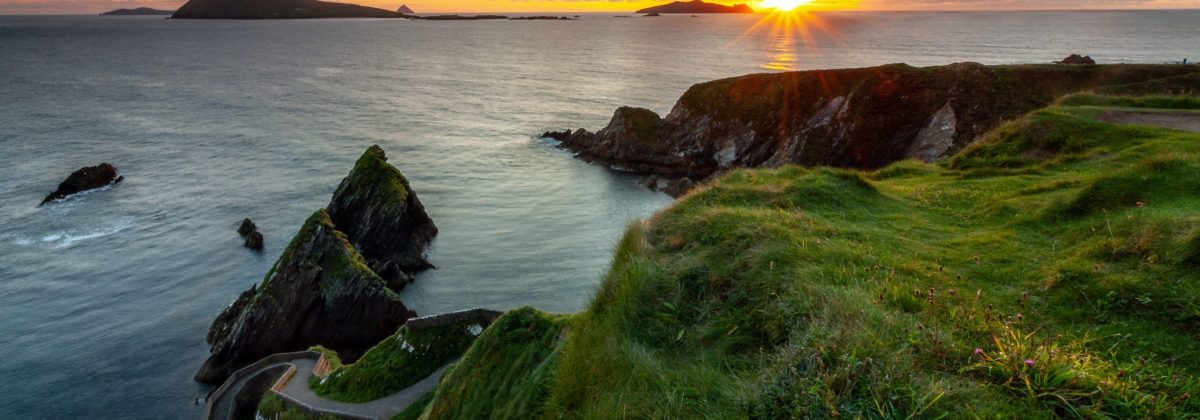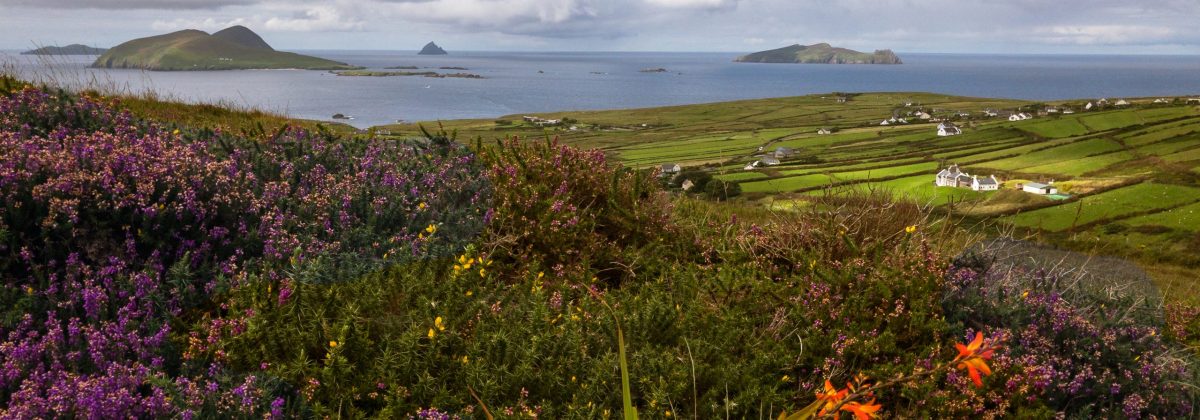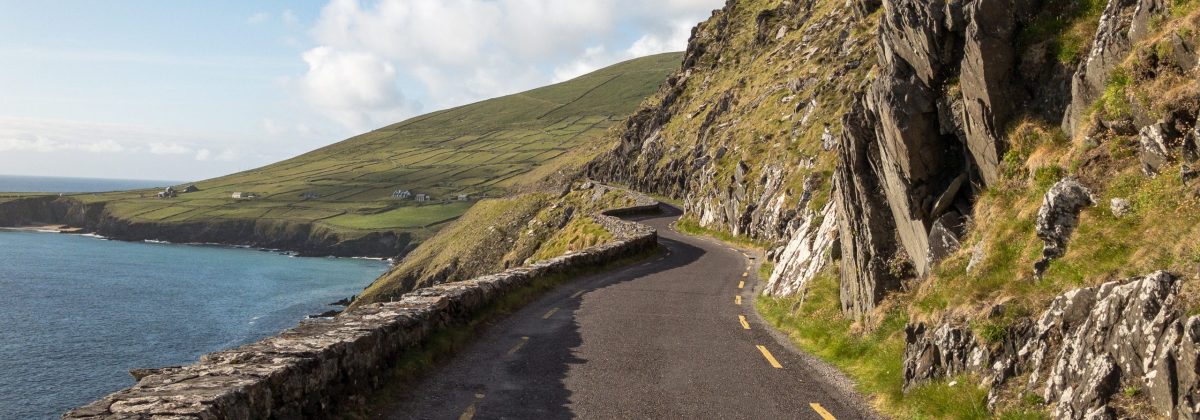The idyllic Dunquin (Dún Chaoin) village is at the western tip of the peninsula, steeped in history and intense beauty, it is the gateway to the mesmerising Blasket Islands. The area around Dunquin is known for its strong Irish culture and wild, untamed landscape. The village is spread out around the Dunquin Pier with its steep, picturesque slip that’s become an iconic image of West Kerry. Book a stay in one of our Luxury holiday homes, Dunquin.
Coumeenole Beach is a popular stop, It was used as one of the locations for the filming of ”Ryan’s Daughter”. It is the closest beach to Dunquin and has dramatic views (The currents here are extremely dangerous and only for experienced surfers, visitors should not enter the sea). In the other direction there is Clogher strand with stunning white sands but also dangerous for swimming. Go a bit further through Ballyferriter to Wine Strand for fantastic swimming beaches.
The Blasket Islands are a group of islands that comprise of The Great Blasket Island (An Blascaod Mór), Beginish (Beiginis), Inishnabro (Inis na Bró), Inishvickillane (Inis Mhic Uileáin), Inishtooskert (Inis Tuaisceart), and Tearaght Island (An Tiaracht).
Inishtooskert is also known locally as An Fear Marbh (the dead man) or as the sleeping giant, due to its appearance from the mainland. There are wonderful children’s storybooks available, telling the fantastical story of the sleeping giant.
When you round Slea Head towards Dunquin and gaze across the sea to The Great Blasket Island, at the village of houses above a perfect white strip of sand, you long to visit this peaceful island full of pieces of the past. It’s not sure how long the island was inhabited for but there were 160 islanders living there in 1840, the island was abandoned in 1950.
It is well worth visiting the Blaskets, the boat trip is exhilarating and you can’t fail to admire the natural beauty of the place.
There is a lovely walk from the pier along the cliffs to The Great Blasket Centre (an interpretative museum detailing the unique community who once lived on the Blasket Island before they relocated in Dunquin) up towards An Ghraig then around to Kruger’s pub, a favorite with locals and visitors alike. It is named after Muiris “Kruger” Kavanagh, a local lad who migrated to the US but returned to Ireland set up Kruger’s, to which he drew many friends from Broadway. Although Kruger passed on, his pub carries on as an entertainment hub with weekend performances of sean-nos singing (an old Irish unaccompanied style) and step dancing.
Dunquin is only 20 minute drive west of the lively town of Dingle with all it’s amenities and a 5 minute drive from Ballyferriter with it’s great pubs, restaurants and world famous links golf-course Ceann Sibeal. It is on the famed Slea Head drive, one of the most scenic drives in Ireland on windy cliff edge roads, it takes you through breath-taking scenery to the neighbouring villages of Ballyferriter, Ballydavid and Ventry. On the drive towards Ventry, at Fahan you will find Clocháns (known as Beehive huts) which are fascinating dry stone circular huts with unknown origins. A little further; the Celtic and prehistoric Museum has a large collection of artefacts, dating from 500 million years ago until the middle ages. It has the oldest mammoth head found in Europe plus dinosaur egg fossils. The nearby Stone House restaurant serves an all day with a menu of wonderful dishes and a unique experience in this large stone roofed building full of local art.
The coastal road around the Slea head drive is fairly flat therefore a perfect route for cyclists, the whole loop would take about 5 hours but you can also just enjoy a leisurely local ride. Bikes can be hired at Foxy John’s on Main st, Dingle or Gorman’s Restaurant in Ballydavid.



